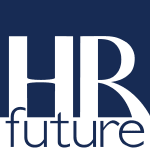Why do HR specialists employ remote teams? Today’s labour market sets no boundaries encouraging remote and hybrid work modes. So, HR managers look for ways to control such personnel. One of the solutions is remote monitoring software designed to track and enhance employee productivity and compliance. Implementing this software makes management more efficient. This article will show what benefits this tool will bring to HR specialists, improving efficiency, transparency, and workforce management.
How Monitoring Software Supports HR in Remote Workforce Management?
As remote work continues to reconsider the comprehensive workplace, HR professionals face new challenges in managing productivity, engagement, and compliance. Employee monitoring software has emerged as a valuable tool to streamline the workforce, offering real-time records with employee performance, security, and well-being.
The software market offers a variety of monitoring tools tailored to different business needs. They are designed not only to track but primarily to boost employees’ productivity and to enhance the company’s security. To what components should HR managers pay attention when choosing remote monitoring tools?
Productivity Tracking and Performance Evaluation
Productivity is a cornerstone in how to achieve business success. When knowing that your remote team stays focused on work-related activities, managers are able to devote time to new plans and processes.
Without physical supervision, it becomes essential to adopt data-driven approaches to track productivity and evaluate performance effectively. So, managers promote the ideas of using real-time productivity tracking, including such instruments as time tracking, attendance monitoring, application and website usage tracking, idle vs. active time analysis.
By utilizing these features, HR can identify inefficiencies, streamline workflows, and support employees in improving time management. So, HR managers collect data, analyze them, and make more informed decisions due to the reports with the following metrics:
- Task completion rates
- Project progress monitoring data
- Quality assessment
This data allows HR to recognize top performers, identify employees who need additional support, and create targeted performance improvement plans.
Enhancing Employee Engagement and Well-Being
HR plays a crucial role in ensuring employees remain engaged and avoid burnout while working remotely. Monitoring software helps by:
- Spotting workflow bottlenecks – If employees are working excessive hours or experiencing productivity slumps, HR can enter the situation.
- Maintaining work-life balance – Monitoring tools can send reminders to employees to take breaks, helping prevent stress and fatigue.
- Promoting open communication – By using collected data responsibly, HR can create trust-based policies that foster collaboration rather than surveillance.
By combining tracking records with HR initiatives, businesses can create a healthy work environment that enhances performance while following employee morale.
Ensuring Data Security and Compliance
Remote tracking tools are implemented not only to enhance productivity but also to protect sensitive data and match the industry regulations. These tools thoroughly record access to files, folders, and confidential documents, helping HR and IT teams monitor and prevent unauthorized actions.
Comprehensive monitoring software records detailed logs of opened files, modifications, and data transfers, guaranteeing that confidential company’s data remains protected. By monitoring the employees’ activities, companies can prevent internal data leakage and enforce strict data protection protocols.
Additionally, both HR managers and employees comply with GDPR, CCPA, and other labor regulations. Remote tracking tools generate audit trails, helping companies maintain transparent records for compliance audits. These records demonstrate that policies are maintained, employee work hours are registered, and confidential data is kept responsibly.
By leveraging remote workforce management tools, HR managers can safeguard data by considerably improving security measures.
Best Practices for Implementing Employee Monitoring Software
Implementing employee monitoring software is not a complicated process, if realized transparently. Many practices were developed for integrating employee monitoring software. They can be used within big, mid-sized, and small businesses.
HR professionals should apply the following practices:
- define clear objectives and policies: Your employees should know clearly definite objectives, scope, and range of monitoring.
- choose the right software for business needs: This software supports real-time activity tracking while respecting employee autonomy.
- communicate openly with employees: Notify your employees openly about the implementation of employee monitoring software.
- focus on productivity insights, not surveillance: Use data to support employees, identifying areas for training and development.
- ensure compliance with labor laws and data protection regulations: This software should adhere to workplace privacy laws
- regularly review and optimize monitoring practices: Carry out regular audits and gather employee feedback.
Implementing employee monitoring software requires a careful balance. Companies should equally unite oversight and employee trust. By paying close attention to the transparency, compliance, and ethical practices, HR professionals can leverage monitoring tools to enhance productivity, protect sensitive data, and support remote workforce efficiency.
Summing Up
By hiring remote teams, HR managers should be ready to track their activities. Many companies implement employee monitoring software for remote teams to boost their productivity and enhance confidential data.
When used ethically, monitoring tools empower HR professionals by providing data-driven records that help improve workforce efficiency, spot performance trends, and ensure compliance with company policies. Instead of micromanaging employees, businesses should focus on leveraging monitoring software as a tool for support, development, and security.
Guest writer


























